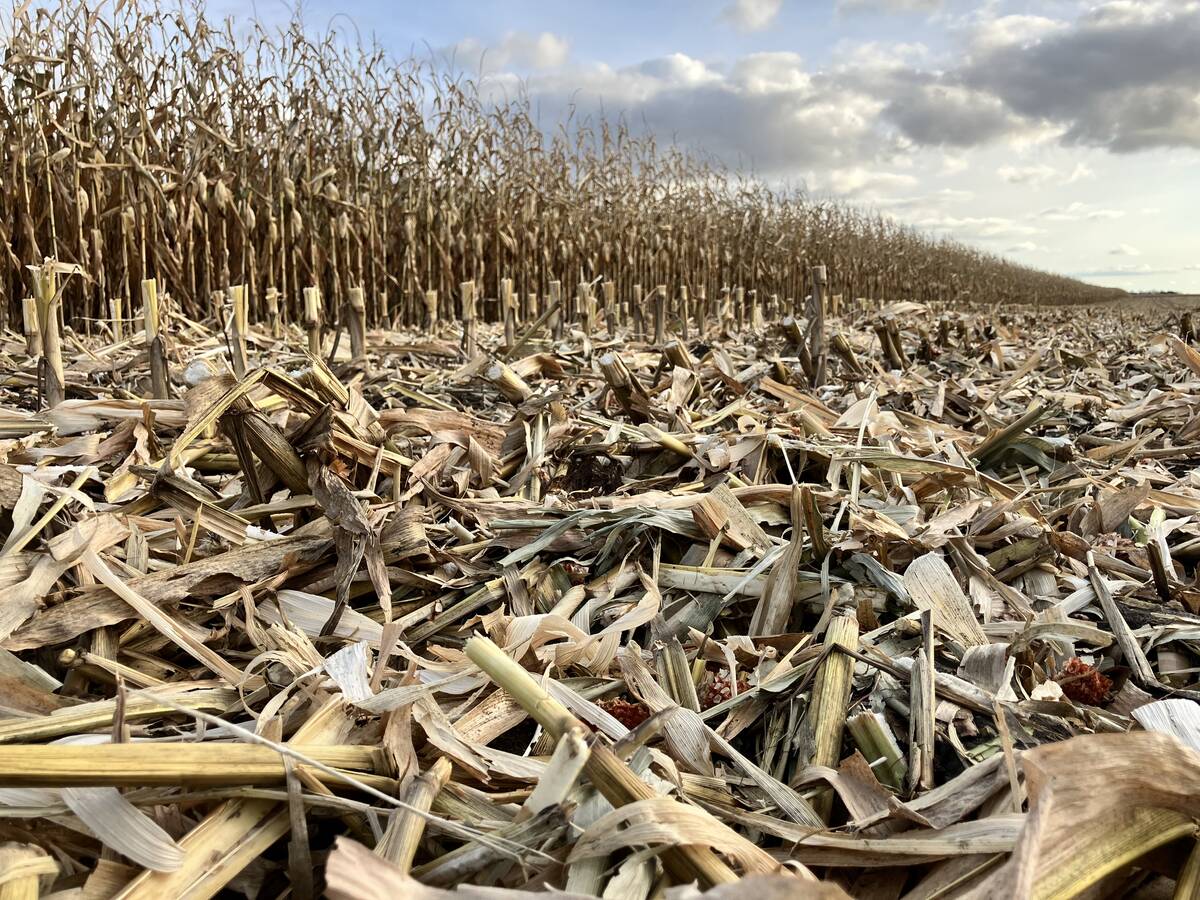Strong opposition to a plan to slash crop insurance support in the United States is worth watching even though it highlights the difference between the American and Canadian systems.
On October 28, the House of Representatives passed a bill that would have set the federal budget for the next two years, in other words until after the 2016 Presidential and congressional elections. It would authorize an increase in the U.S. debt ceiling. To hold the line on government spending, it called for a US$3-billion chop over 10 years to the federal crop insurance program.
Read Also

Corn yields surprise Manitoba farmers
StatCan said Manitoba had a fantastic 2025 corn crop, but yields were highly variable with some hitting 200 bu./acre, while others were closer to 100 bu.
That decision provoked sharp reaction from the National Association of Professional Insurance Agents (PIA), which drew promises from key senators to ensure that the crop insurance wasn’t gutted when spending authorizations are decided in the coming weeks. The association got its members across the United States to flood Congress and the Senate with the message that the crop insurance program had to be protected. The legislation has been passed by the Senate on Oct. 30 but the association is confident the program will be spared.
“PIA thanks the House and Senate leadership for quickly responding to the calls from their constituents by pledging to reverse the cuts to the crop insurance program,” said PIA national vice-president of government relations Jon Gentile. “These cuts would seriously jeopardize private-sector delivery of crop insurance, part of a successful public-private partnership. America’s farmers and consumers deserve better.”
The U.S. privately run program stands in contrast to AgriInsurance in Canada, which is a federal-provincial-producer cost-shared program. AgriInsurance is a provincially delivered program to which the federal government contributes a portion of total premiums and administrative costs. The federal government also provides a reinsurance arrangement (deficit financing) to provinces. Currently, five provinces (Alberta, Saskatchewan, Manitoba, New Brunswick and Nova Scotia) participate in the reinsurance arrangement. Canadian farm organizations are watching development south of the border but are not offering any comments on the situation.
AgriInsurance plans have been expanded to cover livestock as well as crops including wheat, corn, oats and barley as well as horticultural crops such as lettuce, strawberries, carrots and eggplants. Some provinces also provide coverage for bee mortality as well as maple syrup production.
In the U.S., the House of Representatives is expected to undo the damage done to crop insurance when it discusses the appropriations measure to fund the federal government, which must take place by December 11. The moves has the backing of Agriculture Committee chairmen and party leaders in both chambers.
PIA will continue to work with our allies to hold congressional leadership to their word. “This victory clearly shows the power of grassroots advocacy,” Gentile said.
He said the proposed cuts could push farmers and providers out of the insurance market.
Joshua Woodard, assistant professor of agricultural business and finance at Cornell’s Dyson School of Applied Economics and Management, said the proposed cuts will increase premiums, lead to lower uptake by farmers, and further discourage providers from participating in Federal Crop Insurance.
With the Agricultural Act of 2014, our policy-makers clearly established crop insurance as the primary and preferred tool for dealing with yield and revenue risks inherent to crop-based agriculture. The government relies on the private sector for delivery of the Federal Crop Insurance Program, and these companies also share in the risk.
“Some of our recent research on crop insurance participation patterns has revealed that demand can be quite responsive to subsidization. A look back to the last 40 years shows that farmers do not tend to use crop insurance unless premiums are subsidized.
“Reducing the subsidy on these revenue insurance products from the current level of approximately 60 per cent to 50 per cent would mean an increase in farmer-paid premiums on those products by about 25 per cent, and probably similar reductions in farmer buy-up.”
He said many of the larger agribusiness players are already in the process of exiting the market, perhaps because it has become far less attractive from an underwriting perspective. For example, John Deere recently completed the sale of its crop insurance business. Monsanto’s crop insurance arm — Climate Corporation — recently left the Federal Crop Insurance market as well, and Wells Fargo has put its crop insurance business up for sale.”














